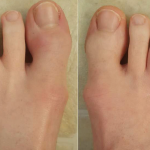HORSHAM, PA—The Janssen Pharmaceutical Companies of Johnson & Johnson announced that the U.S. Food and Drug Administration (FDA) has approved Tremfya (guselkumab) for adult patients with active psoriatic arthritis (PsA), a chronic progressive disease characterized by painful joints and skin inflammation.1,2 Tremfya is the first treatment approved for active PsA that selectively inhibits interleukin (IL) 23, a naturally occurring cytokine involved in normal inflammatory and immune responses associated with the symptoms of PsA.
The safety and efficacy of Tremfya in PsA have been demonstrated in two phase 3 clinical trials. Tremfya is administered as a 100 mg subcutaneous injection every eight weeks, following two starter doses at weeks 0 and 4. Tremfya can be used alone or in combination with a conventional disease-modifying anti-rheumatic drug (DMARD; e.g., methotrexate).
The Unmet Needs in PsA
PsA affects about 1.5 million Americans.3 Studies show that up to 30% of the more than 8 million Americans living with psoriasis will also develop PsA.4 There is currently no cure for the disease, and despite available treatments, many people living with PsA are still searching for more options that can help alleviate their symptoms and provide some relief.
PsA is a chronic, progressive, immune-mediated disease characterized by joint inflammation, enthesitis (inflammation where the bone, tendon and ligament meet), dactylitis (severe inflammation of the digits of the hands and feet), axial disease (pain in the axial skeleton, primarily in the spine, hips and shoulders) and the skin lesions associated with psoriasis.A The disease commonly appears between the ages of 30 and 50, but can develop at any time.5 Though the exact cause of PsA is unknown, genes, the immune system and environmental factors are all believed to play a role in the onset of the disease. Without early recognition, diagnosis and treatment, the disease can continue to progress.5
“Psoriatic arthritis is a complex multi-faceted disease and, for many patients, additional biologic options are very much needed,” says Philip J. Measei, MD, DISCOVER-2 lead study investigator, director of rheumatology research at the Swedish Medical Center, Providence St. Joseph Health and Clinical Professor at the University of Washington School of Medicine, Seattle. “The two phase 3 pivotal trials evaluating the safety and efficacy of Tremfya, an IL-23 inhibitor, for the treatment of adults with active psoriatic arthritis provided insight into how it can improve joint symptoms. Today’s approval is exciting for both patients and their physicians, as there is now a new approach available to help manage the symptoms of active PsA that patients face day to day.”
Data Supporting Approval
The approval of Tremfya was based on results from two pivotal phase 3 clinical trials, DISCOVER-1 and DISCOVER-2, which evaluated the efficacy and safety of Tremfya administered by subcutaneous injection in adults with active PsA compared with placebo. The results, recently published in The Lancet, showed that a significant percentage of patients treated with Tremfya reached the studies’ primary endpoint of ACR20a at 24 weeks, with 52 and 64% of patients achieving an ACR20 response compared with 22 and 33% in patients treated with placebo in DISCOVER-1 and DISCOVER-2, respectively.
In addition, treatment with Tremfya improved patients’ symptoms, which included skin manifestations of psoriasis, physical functioning as measured by the HAQ-DI (Health Assessment Questionnaire Disease Index)B and SF-36 Physical Component Summar score, and soft tissue (enthesitis and dactylitis).C Tremfya also resulted in improvement in fatigue as measured by the Functional Assessment of Chronic Illness Therapy—Fatigue (FACIT-F).D
“At Janssen, we strive to reimagine what is possible in how immune-mediated diseases like active psoriatic arthritis are understood and treated,” said David M. Lee, M.D., Ph.D., therapeutic area head, Immunology, Janssen Research & Development LLC. “Tremfya is the first and only selective IL-23 inhibitor approved for both active psoriatic arthritis and moderate to severe plaque psoriasis, as well as the only biologic approved for the treatment of PsA to have improvement in fatigue as measured by FACIT-F included in the U.S. prescribing information. Today’s approval marks an exciting milestone as we follow the science and search for solutions for patients with these complicated diseases.”
The overall safety profile observed in patients with PsA treated with Tremfya is generally consistent with the safety profile in patients with plaque psoriasis with the addition of bronchitis and neutrophil count decreased.
About the DISCOVER Development Program
DISCOVER-1 and DISCOVER-2 were Phase 3 randomized, double-blind, placebo-controlled studies that evaluated the safety and efficacy of Tremfya in 1,120 adult patients with active PsA who had inadequate response to standard therapies. In DISCOVER-1, approximately 31% of patients had been previously treated with up to two anti-tumor necrosis factor alpha (anti-TNFα) agents whereas in DISCOVER-2 all patients were naïve to biologic therapy. Approximately 58% of patients from both studies had concomitant methotrexate use.
The DISCOVER-1 study showed that in patients who received 100 mg of Tremfya every 8 weeks after two starter doses, 52% achieved an ACR20 response vs. 22% treated with placebo (P<0.0001), with a comparable response irrespective of prior TNF exposure. In DISCOVER-2, 64% of patients who received Tremfya every 8 weeks achieved an ACR20 response, vs. 33% treated with placebo (P<0.0001).
Tremfya was also shown to relieve patients’ pain in their soft tissue and inflammation in their fingers and toes. In a pooled analysis of DISCOVER-1 and -2 at week 24, treatment with Tremfya every 8 weeks resolved enthesitis in 50% of patients vs. 29% in patients receiving placebo (P=0.0301). In another pooled analysis at week 24, treatment with Tremfya every 8 weeks also resolved dactylitis in 59% of patients vs. 42% receiving placebo (P=0.0301).
Beyond its impact on improving symptoms of PsA in joints, among patients with psoriatic skin involvement, Tremfya also resulted in an improvement in the skin manifestations of psoriasis in patients with PsA.
“Finding the right psoriatic arthritis treatment can be hard. Individuals living with this complex disease are often left searching for answers, so it’s important for patients to understand their options and to work closely with their doctor on a treatment plan,” says Stacie Bell, Ph.D., chief scientific and medical officer, National Psoriasis Foundation. “Approval of new treatments for psoriatic arthritis is welcome news for this community and offers physicians and patients more options in their fight to manage this chronic disease.”
Patients may self-inject with the Tremfya One-Press injector after physician approval and proper training. The Tremfya One-Press is a single-dose, patient-controlled injector that has received the Arthritis Foundation’s Ease of Use Commendation after being tested in patients with PsA.
For more information on the safety, prescribing and use of Tremfya (guselkumab), visit www.tremfya.com.
Disclaimer: Dr. Philip J. Mease is a paid consultant for Janssen. He has not been compensated for any media work.
References
- Belasco J, Wei N. Psoriatic arthritis: What is happening at the joint? Rheumatol Ther. 2019 Sep;6(3):305–315.
- McLaughlin M, Ostor A. Early treatment of psoriatic arthritis improves prognosis. Practitioner 2014 Dec;258(1777):21–24, 3.
- Johns Hopkins Arthritis Center. Arthritis information: Psoriatic arthritis. 2020.
- National Psoriasis Foundation. Statistics. 2020.
- National Psoriasis Foundation. About psoriatic arthritis. 2020.
Notes
A. ACR20 Response: defined as both improvement of 20 percent in the number of tender and number of swollen joints, and a 20 percent improvement in three of the following five criteria: patient global assessment, physician global assessment, functional ability measure, visual analog pain scale, and erythrocyte sedimentation rate or C-reactive protein (CRP).
B. Health Assessment Questionnaire Disease Index (HAQ-DI): includes 8 categories, reviewing a total of 20 specific functions to evaluate patient difficulty with activities of daily living over the past week. Categories include dressing and grooming, arising, eating, walking, hygiene, reaching, gripping, and errands and chores.
C. SF-36 Physical Component Summary: 8 multi-item scales assessing physical function, role limitations due to physical health problems, bodily pain, general health, vitality, social functioning, role limitations due to emotional problems and emotional well-being.
D. Functional Assessment of Chronic Illness Therapy—Fatigue (FACIT-F) Scale: measured on a 4-point Likert scale (4=not at all fatigued to 0=very much fatigued).


